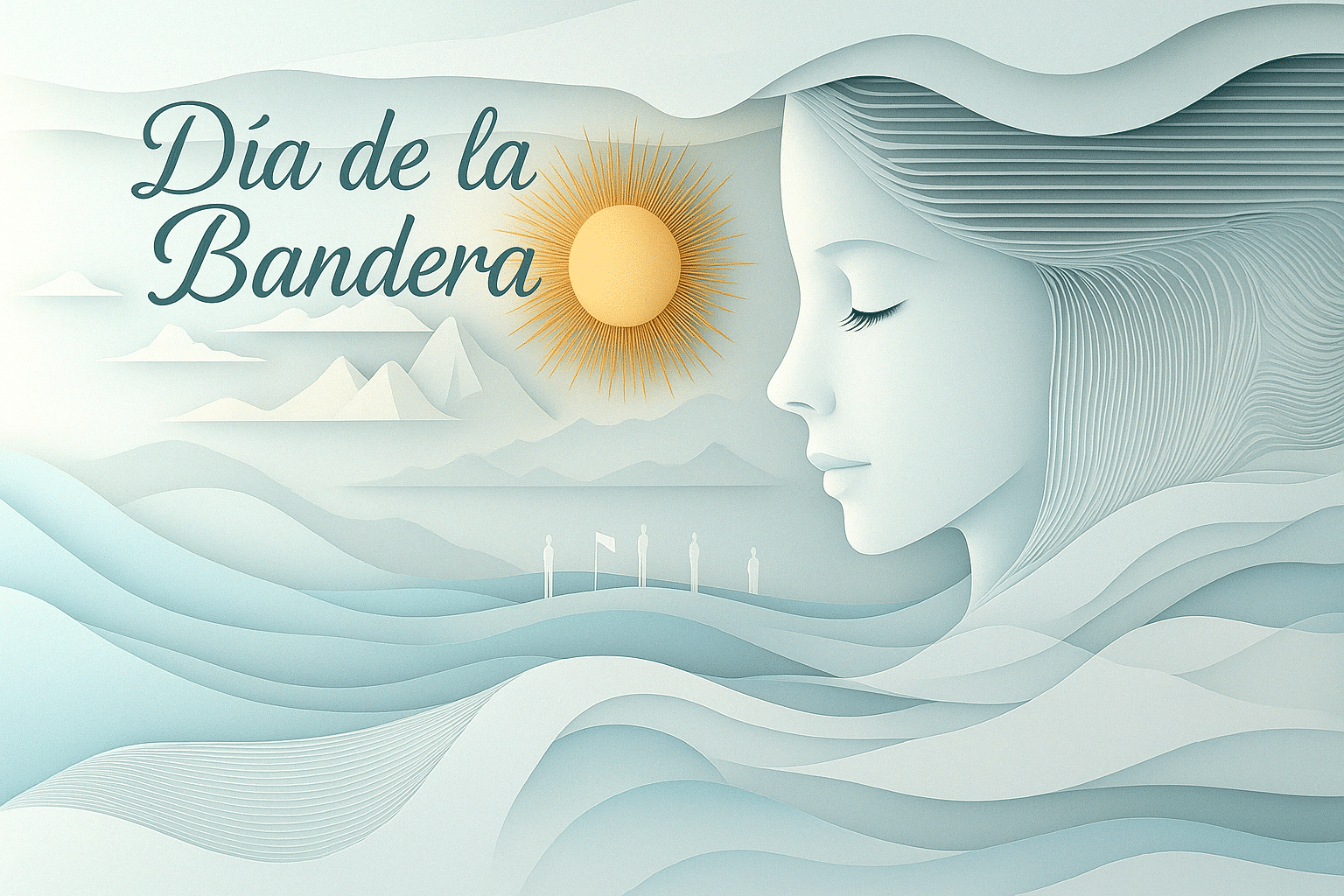What is Día de la Bandera?
Día de la Bandera is held every year on June 20 and is observed in Argentina. The day honors the national flag and commemorates the death of its creator, Manuel Belgrano. He designed the blue and white flag during the Argentine War of Independence, and the day is both patriotic and solemn.
The celebration is about national pride, historical memory, and identity. Schools, government institutions, and communities gather to pay tribute to the flag as a symbol of unity and freedom. Ceremonies often include flag-raising events, speeches, and student activities.
In the city of Rosario, where Belgrano first raised the flag in 1812, a major national ceremony takes place each year. It includes military parades, choirs, and cultural events, often attended by national leaders.
History and Origin
Día de la Bandera was officially established as a public holiday in 1938. The date, June 20, was chosen to coincide with the anniversary of Manuel Belgrano’s death in 1820. Belgrano was a military leader, lawyer, economist, and one of the key figures of Argentine independence.
The flag was first hoisted on the banks of the Paraná River in Rosario. Although it was initially not approved by the national government, it later became the official flag of Argentina in 1816, the same year independence was declared.
Belgrano’s contribution to the nation went beyond military campaigns. His flag became a unifying symbol, and his legacy lives on in schools, towns, and streets that bear his name. Día de la Bandera is a time to remember both the man and the meaning behind the colors.
Who participates in Día de la Bandera?
- Schoolchildren: Swear allegiance to the flag in formal ceremonies held across the country.
- Teachers and principals: Organise educational events, performances, and flag tributes.
- Military units: Take part in official parades, especially in Rosario, the historic site of the first flag raising.
- Local governments: Coordinate public events, speeches, and civic ceremonies.
- Families: Attend community gatherings or discuss the meaning of the flag at home.
Slogans and Themes
Día de la Bandera revolves around the values of national identity, pride, and remembrance. Common slogans include “Honor a Nuestra Bandera,” “La Patria en el Corazón,” and “Belgrano Vive en Nuestros Colores.” Themes focus on respect for the flag, the role of youth in preserving heritage, and the flag as a living symbol of independence.
Colors, Symbols and Patterns
Colors
- Sky blue: Represents the vast Argentine sky and the call for freedom.
- White: Symbolises peace, unity, and the desire for justice.
- Gold: Used in the sun emblem to signify energy and the spirit of the nation.
Symbols
- The Sun of May: A golden sun with a face, found on the national flag, tied to independence.
- The flag itself: Waved or raised in homes, schools, and ceremonies across the country.
- Portraits of Belgrano: Displayed to honour the creator of the flag and his legacy.
Patterns
- Horizontal bands: Reflect the design of the flag, simple and recognisable.
- Sunburst designs: Echo the central emblem of the flag and radiate national pride.
- Ribbon motifs: Often seen in school decorations and patriotic displays.
Most used hashtags
- #DíaDeLaBandera
- #BanderaArgentina
- #ManuelBelgrano
- #OrgulloNacional
- #20DeJunio
How do you celebrate Día de la Bandera?
- Attend a ceremony: Join a public or school flag-raising event in your community.
- Teach children: Talk about the history of the flag and the life of Manuel Belgrano.
- Visit Rosario: Experience the official national celebration where the flag was first raised.
- Display the flag: Hang it proudly from your home, window, or balcony.
- Share messages: Post a tribute or photo on social media using the official hashtags.
Why is Día de la Bandera important?
Día de la Bandera is important because it strengthens the connection between the people and the national identity of Argentina. It reminds citizens of their shared history and the sacrifices made for independence. The day also places focus on the values that unite Argentinians: peace, pride, and perseverance.
Honouring the flag is more than a tradition. It is a way of carrying the past into the present, showing respect to those who shaped the country, and renewing the commitment to its future.
Features
June 20: Día de la Bandera (Flag Day Argentina)
Why do you keep falling for the same type?
Read the article Lovemaps: the hidden blueprint of our love.

